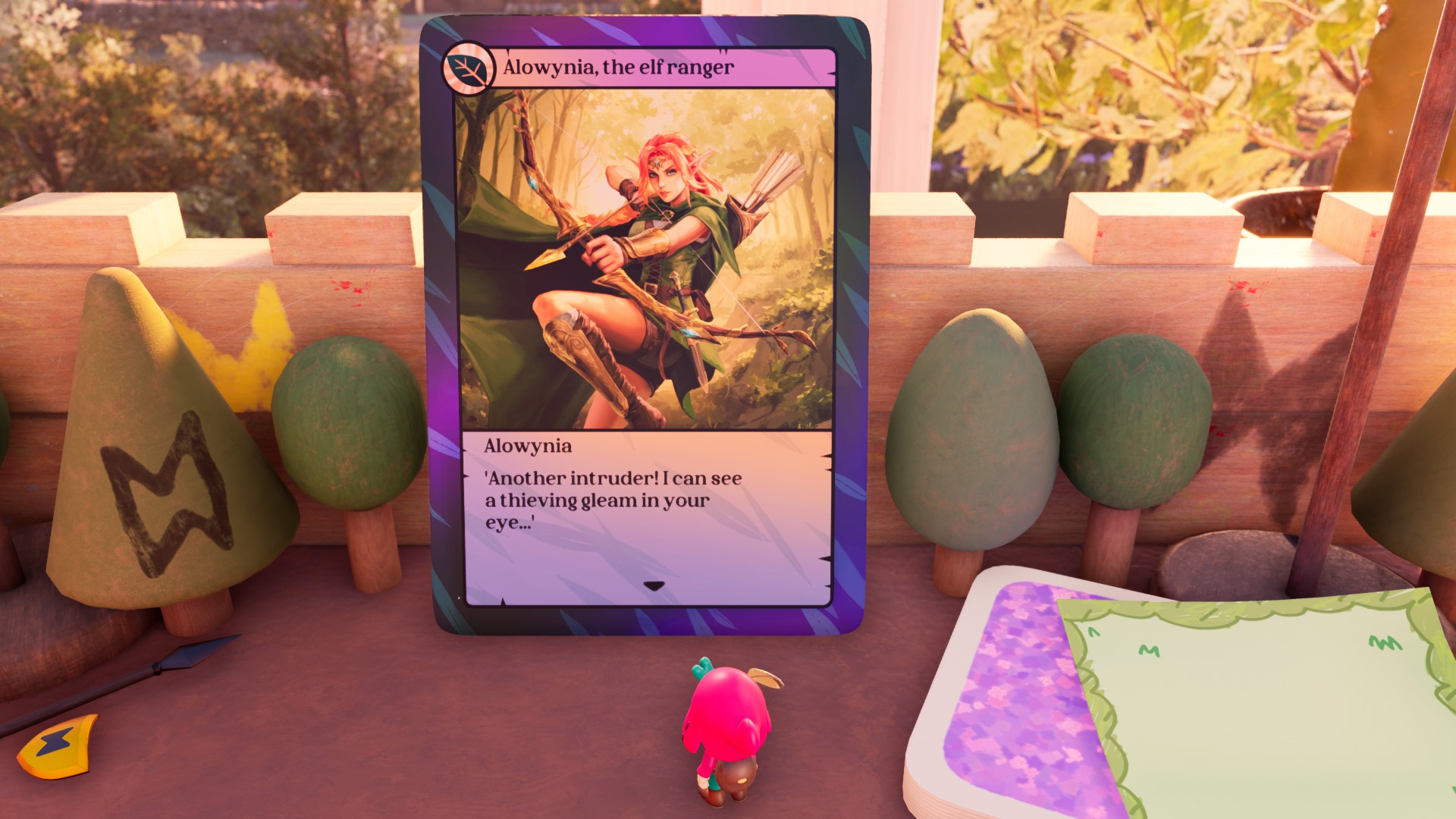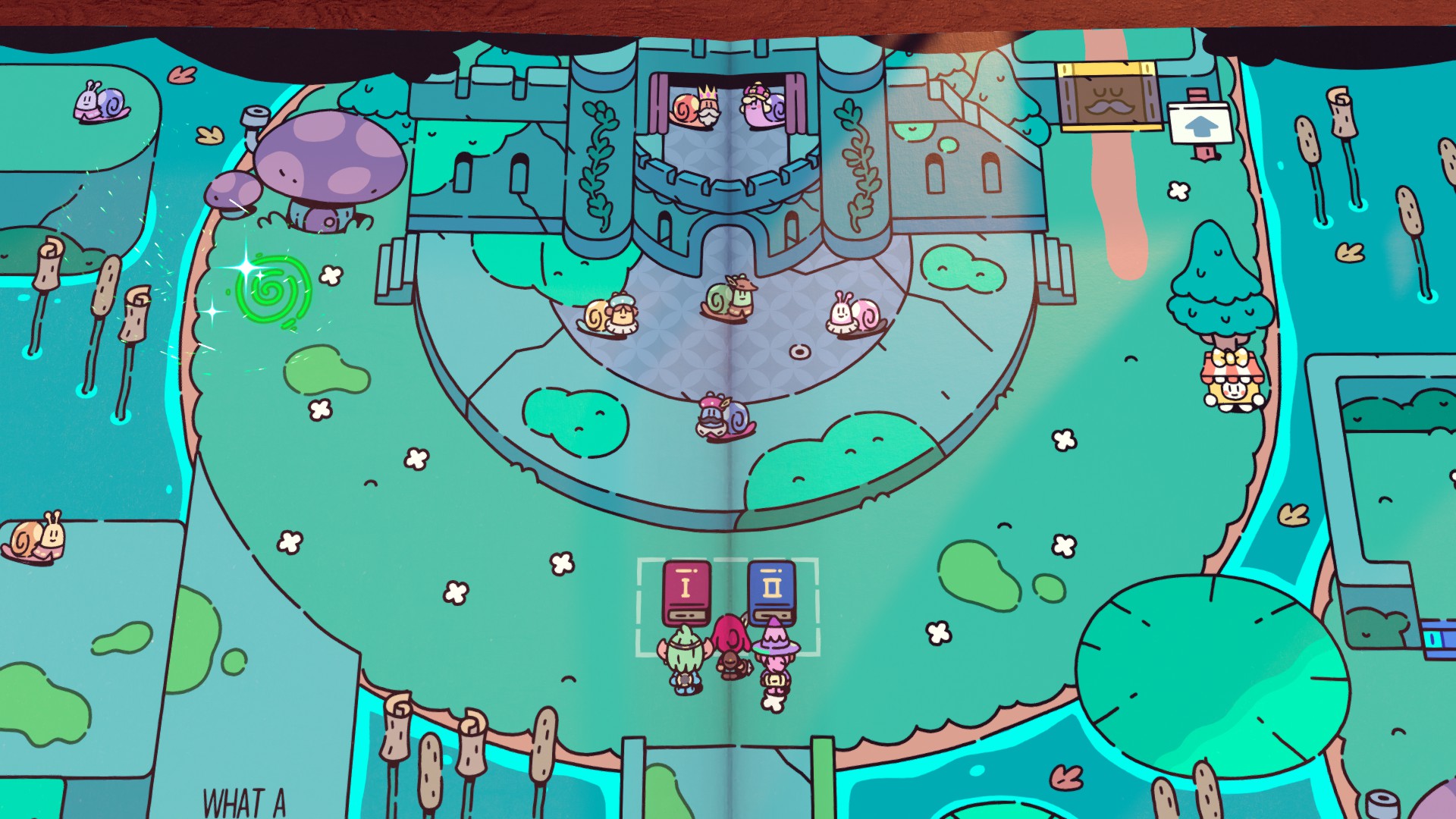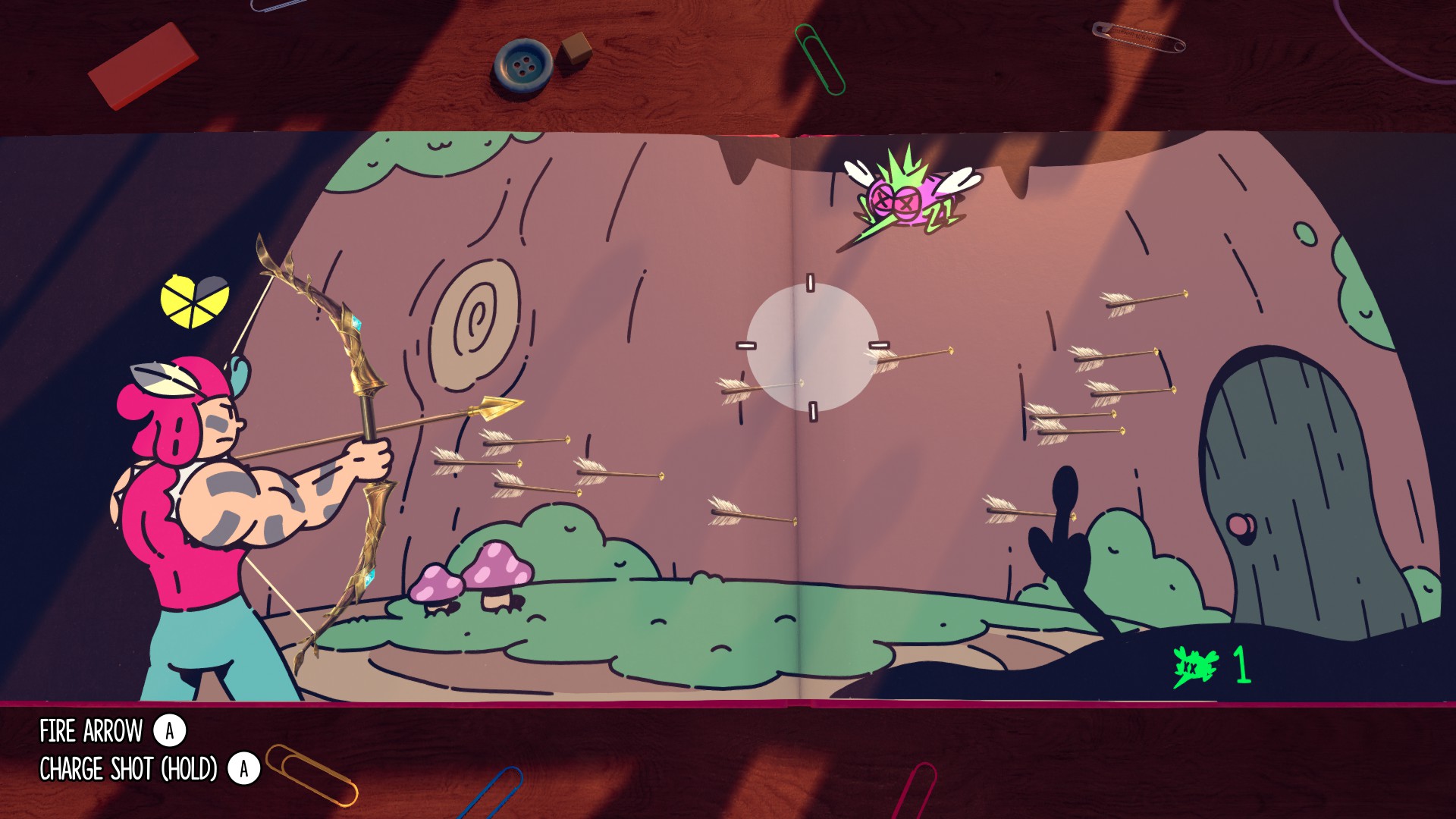
I think if I discovered my entire life was just a story in a children's picture book, I'd probably have quite a serious breakdown. Jot, the eponymous hero of The Plucky Squire, seems unfazed by it all, however—even as he leaps from the pages of his book and discovers an entirely new 3D reality beyond his own.
It's a great twist for a game that at first just seems like a cute little adventure in the style of the old top-down Legend of Zelda games. Initially charged just with finding some beeswax for a wizard, Jot merrily journeys through the pages of his book with his friends, all brought to life with gorgeous 2D animations. But when the evil sorcerer Humgrump unmoors him from the constraints of the story, things get a lot more interesting.

My hands-on only features the first four chapters of the game, but I'm impressed how much creativity developer All Possible Futures has crammed into that roughly two hour introduction. As my party and I continue to travel the land—now searching for a way to stop Humgrump—my fourth wall-breaking abilities let me overcome traditional obstacles in fun new ways.
Jot can now monkey about with the very sentences of his story, for example, swapping a word from one line to another. Changing a word will change whatever it describes, making a "big" enemy "small", turning "night" to "day", or making a "locked" door suddenly "open". There's not as much room to experiment as I'd like—only certain words are allowed in each sentence—and the puzzles are more charming than they are brain-teasing, but I'm hopeful more depth may develop as the game goes on from here.
You can also, as I mentioned before, simply jump out of the book entirely, and either run over to another portal to jump back in at a different point, or explore the cluttered and oddly sprawling desk the book rests on to find new abilities. Thanks to your powers, you're free to jump in and out of any artwork you find out there, flitting between 2D and 3D to get across gaps and avoid patrolling beetles (apparently they love eating fictional characters?).

My favourite moment in the preview build comes when I discover an abandoned game card—think Magic: The Gathering—depicting a classic fantasy elven archer. Leaping in, I'm able to battle with and then befriend her. She likes me enough to lend me her bow, which I can take with me back into my own story and use for a shooting minigame against swarms of flying insects. It makes me really excited to see what further surprises are in store deeper into this adventure. Does Jot ever get to explore a comic book, or perhaps the art on the front of a videogame case?
But even within the confines of the original book, there's such a sense of imagination to The Plucky Squire. Minigames like that bow-based encounter abound—within four chapters I've boxed a honey badger Punch Out-style, done Mario-style 2D platforming, had to time my grab perfectly to snatch a fish out of mid air, and more. None of these diversions has great depth or strategy, but that's not really the point—the joy is just in seeing what fun little scene has been prepared for you next, and how it'll be rendered in the game's adorable art style.
The combination of gentle charm with real creativity really elevates The Plucky Squire into something more interesting than just another cosy little adventure. If it can maintain that sense of novelty and fun in the chapters that follow—and maybe get a little more elaborate with its puzzles—it could be 2024's next great success story when it launches on 17 September.







